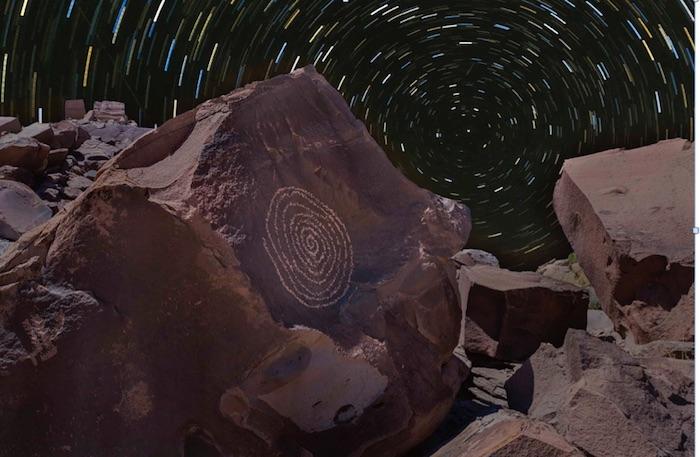
Martha’s Butte Night Sky by Brent Schoenfeld, July 2015
With little light pollution obscuring the skies over Petrified Forest National Park in Arizona, it can be a perfect spot for studying the stars overhead. On October 19 you can do just that with a park ranger and other astronomers and photographers.
Ranger Kip Woolford will be leading the night sky viewing from the Chinde Point picnic area in Petrified Forest. Overnight camping is permitted, but participants must arrive in the park prior to park closing (6 p.m. Mountain Standard/Pacific Daylight Time). RSVP required no later than October 18th at 5 p.m. Mountain Standard/Pacific Daylight Time) for all RVs and Trailers to: Kip Woolford at 928-524-6228 Ext. 273 or [email protected]
Dr. Larry Behers is an astronomer with Project Astro, which is funded in part by the National Optical Astronomy Observatory (NOAO) in Tucson, Arizona, whose goal is education. NOAO has developed models for explaining the seasons, moon phases, solar system size, mythology legends and have a simple way to model gravity, which leads on to Black Holes, Mass, the Higgs Boson, Dark Matter, etc.
For the last five years Dr. Behers has been working with a team from Uppsala University in Sweden to discover ways to use specific bacteria in agricultural areas with drought issues. With his background in science and technology Dr. Behers has spent a lot of time in schools at all grades, as well as a merit badge counselor for the astronomy merit badge for the Boy Scouts of America. The following is a list of interpretative programs that Dr. Behers will conduct with participants of this night sky event on October 19:
5:30 p.m. – 6:15 p.m. The Sun
Sunset is at 5:47 pm, bring binoculars to watch for the ‘green rim’ and the ‘green flash.’
Why is the sky blue? Why can’t we see the stars in the daytime?
Can we see Earth’s shadow?
7:40 p.m. – 8 p.m. Lunar Phases and Eclipses
Why is the moon in a different place each night and a different shape?
Why do we always see the same side of the moon?
Why is a total lunar eclipse red? What is a Supermoon?
8:30 p.m. – 8:50 p.m. Reason for the Seasons/Saving the Night Sky
Why is it hot in the summer and cold in the winter?
Light pollution – What happens if we can no longer see the Milky Way, that beautiful ribbon of light?
9:30 p.m. – 9:50 p.m. What is Gravity?
Why do the moon and planets move the way they do?
10:30 p.m. – 10:50 p.m. Constellations/Mythology
Of the 88 constellations, 87 are myths; only one is based on ancient history.
Events will include star gazing and Junior Ranger Night Explorer kids activities. Night sky photographers are welcome as well. Night Sky Astro-Photographer and 2014 Artist-in-Resident Brent Schoenfeld will be available on site to assist with questions about the methods for astro-photography.
Overnight camping is not required (once you leave the park you will not be allowed back into the park). There are restrooms and picnic tables on-site but no R.V. hook-ups or showers. R.V.s and trailers are welcome up to a 10 vehicle maximum on a first-come-first-served basis. Open fires are prohibited! Make sure to bring plenty of water and food, headlamps, flashlight (red gel filter
to preserve night sight during sky observation), warm clothing and closed-toed shoes are recommended.
This activity is free and open to the public (regular park entrance fees apply).



Add comment